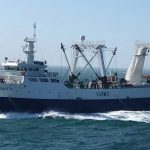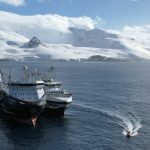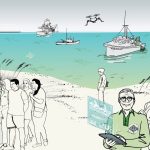Kurt Oldenburg, fisheries’ ecology supervisor with the Ministry of Natural Resources Lake Erie Management Unit, informed that Long Point area has number of species of interest like turtles and other species. These creatures are enlisted as endangered species by either federal or provincial legislation. he told that if it was a great idea to get proactive, see what is out there, if the (fishing) gear was causing harm and if there were modifications that could be done.
The report revealed that the fishery on the inner bay is mostly a live fishery, with the fish caught and sold at live fish markets. The nets used are hoop and seine. Hoop nets consist of a series of hoops with netting strung between that trap the fish. They can be left overnight and must be checked every 48 hours. A seine net is a large net that is set with a boat and then pulled into shore, capturing fish along the way.
During the study, which included monitoring the catch for 10 days in the spring and seven in the fall, 203 individual species of interest were caught in 368 net lifts. Only one provincial and nationally threatened species – a spotted gar – was caught. The most common species of interest caught were warmouth and northern map turtle. These, and all species of interest caught, were returned to the lake unharmed.
The result of the study states that the commercial hoop and seine fishery “has little if any effect on aquatic species at risk”. Outside of the study, commercial fishers must report any species of interest caught in their gear on their daily catch report, whether it is alive or dead.
Media report says that the study was a partnership between the Long Point Biosphere, Ontario Commercial Fisheries’ Association, Ministry of Natural Resources and World Wildlife Fund. Much of the funding came from the ministry’s Species At Risk Research Fund (SARRFO).








